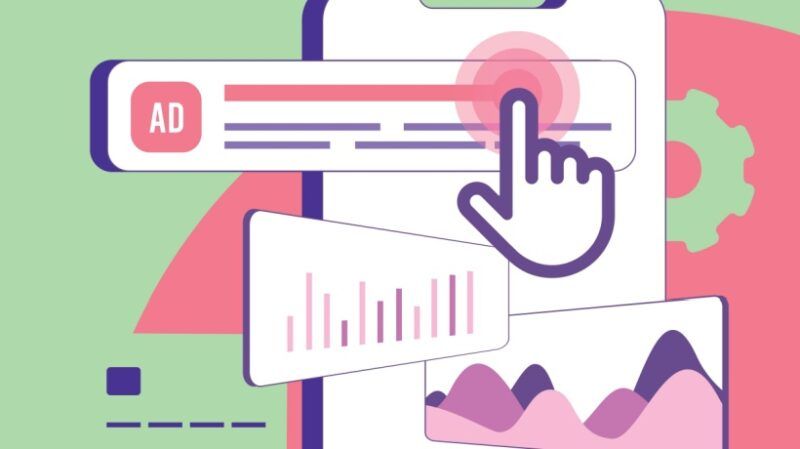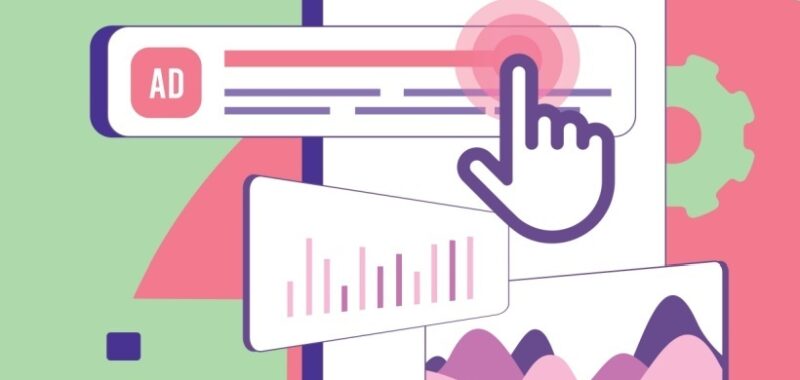
The How-To Of PPC Strategies For Your LMS Company
If you’re an LMS company still contemplating whether or not you should invest in pay-per-click (PPC) strategies, it’s time to take a closer look at the facts. We’re about to break down why PPC isn’t just another marketing term but a serious advertising approach for your business. Pay-per-click advertising is a model where you pay a fee only each time one of your ads gets clicked. It’s like buying visits to your site rather than earning them organically. Essentially, it offers visibility in the digital world and puts your brand right where your potential customers are searching, meaning search engines like Google, social media platforms like Facebook and LinkedIn, or even websites and directories like ours.
But why should LMS companies opt for PPC? The LMS market is growing, and with this comes competition. So, you need to stand out. Educators, corporate trainers, and learners are all searching for the best LMS to suit their needs. They’re typing in keywords like “best LMS for corporate training” or “online learning platforms for schools.” With a strategic PPC campaign, your LMS can appear right at the top of those search results or show up first in directories. If you’re ready to lead your LMS company to success, let’s see some PPC strategies you can follow to get started.
10 PPC Strategies To Ace Your LMS Advertising
1. Identify Target Demographics
Your target demographics are user personas that give a sense of direction to your PPC campaigns. Knowing who your users are and what they need is going to help you deliver them specific ads that resonate with their preferences. For example, as an LMS company, your demographic groups are educators, corporate trainers, and individual learners. Educators want efficient tools, so show them how your LMS can save them time and simplify their workflow. Corporate trainers need an engaging LMS to capture their employees’ attention, so pinpoint how interactive your platform is. Lastly, learners seek flexibility and accessibility, so highlight your LMS’s personalization features.
2. Market Segmentation
When you segment your audience, you’re breaking them down into smaller, more manageable groups based on specific criteria. This means you can tailor your messages to fit the needs, wants, and challenges of each segment. Why does this matter? People are more likely to engage with ads that speak directly to them. To start, check out your audience’s demographics, psychographics, and buying behavior through analytics tools. Next, segment your audience by industry, job role, or company size if you’re targeting B2B clients. For individual learners, think about their education level, career goals, or even learning preferences. Finally, test different segments and see which ones respond best.
3. Keyword Research
The right keywords help your ad show up for the right audience. However, not all keywords are the same. You’ve got broad match, exact match, and phrase match keywords. A broad match is for a broader audience but also brings irrelevant clicks. An exact match is precise, meaning your ad shows up only when someone types in the exact phrase. Lastly, phrase match captures searches that include your keyword phrase within a larger set of search engine queries. Now, to do keyword research, you need tools that generate relevant keywords, understand search volumes, analyze competitors, and create long-tail keywords. These are longer, more specific phrases that might not have huge search volumes but get you targeted traffic. For instance, instead of just using “LMS,” consider “LMS for leadership training.”
4. High-Converting Ad Copy
If you want your PPC campaigns to succeed, you must effectively create three main elements: headlines, descriptions, and calls-to-action (CTAs). Headlines need to be bold and straight to the point. Try something like “Transform Your Training Today” or “Master New Skills Now.” Descriptions help you give enough info about your LMS to keep your audience hooked. For example, something like, “Our LMS platform simplifies learning with intuitive features and 24/7 support.” Lastly, CTAs tell your audience exactly what you want them to do. For instance, “Start Your Free Trial Now” or “Contact Us To Find Out More.” All these grab attention and lead your audience to a path that you’ve specifically created to convert them into customers.
5. A/B Testing
A/B testing helps you test different ad copies to see which resonates best with your audience. It lets you experiment with headlines, descriptions, and CTAs to discover what makes your potential customers click. More clicks mean more conversions, and that means more money. So, how do you actually get started with A/B testing? First, pick an element to test. Maybe you want to see which CTA brings more traffic. Create two versions (A and B) and run them simultaneously. Then, check data like click-through rates (CTR), conversion rates, and cost per click (CPC). It’s not just about which one gets more clicks but which one drives meaningful actions, like signups or purchases.
6. Optimize Landing Pages
Imagine spending time crafting the perfect ad and then leading your audience to a landing page that’s unresponsive and boring. To make your landing pages engaging, you need to make them relevant first. If, for instance, your ad promises a free demo, the landing page should have a clear button for that demo. Apart from relevance and the above-mentioned necessary headlines, descriptions, and CTAs, you also need other elements, like testimonials. These can be from verified buyers of your LMS expressing their satisfaction. User experience, or UX, is also crucial. A cluttered and confusing landing page will drive people away, so keep it clean and simple and make sure it loads fast. Lastly, don’t forget about mobile optimization. If your landing page isn’t mobile-friendly, you’re basically jeopardizing your efforts, as most people browse from their mobiles.
7. Budget Management
Before starting your PPC campaign, you need to know how much you’re willing to spend. Consider your overall marketing budget, the cost of your keywords, and, most importantly, what kind of returns you’re expecting. Then, manage your budget. Track your campaigns and always be on the lookout for high-performing keywords, leaving the ones that aren’t bringing in clicks or conversions. When it comes to bidding strategies, you can choose manual or automated. With manual bidding, you set your bids for each keyword and adjust them based on performance. With automated bidding, on the other hand, you let Google’s algorithms adjust your bids to get you the best results within your budget.
8. Analytics
Analytics and performance tracking are two of the most important PPC strategies. You want to track key metrics to always know how your campaigns are performing and be able to tweak things right away. So, you need to keep an eye on metrics like CTR, which tells you how convincing your ads are; CPC, which needs to be low; cost per acquisition (CPA), which shows you how much you’re spending to get a customer; and finally, return on ad spend (ROAS), which tells you if you’re getting more than you’re spending. To get these insights, you can use tools like Google Analytics and Google Ads. Now, if you have a listing in our directory, you can get this info through your profile with our updated reporting feature.
9. Remarketing Strategies
Remarketing involves sending reminders to your website’s visitors who didn’t complete an action and just left. With remarketing techniques, you keep your LMS company fresh in their minds, making them more likely to return and convert. It’s not just about increasing sales; it’s about building relationships and trust. Plus, it’s cost-effective. You’re targeting people who have already shown interest, so your ad spend isn’t pointless. To do that, you need to install a remarketing piece of code on your website that tracks visitors so you can follow up with them later. Next, segment your audience by the type of visitor they are and adjust your strategy accordingly. For example, show an ad to those who browsed for a bit and left, but offer a discount to those who stayed longer and checked the prices but left afterward.
10. Geotargeting
Geotargeting allows you to focus your PPC efforts on the right audience in the right location and at the right time. This is important because if you’re showing your ads to people halfway across the globe who can’t even access your services, you’re basically throwing away your money. Geotargeting is not just about where; it’s also about when. For instance, if you’re targeting busy professionals who are more likely to scroll through your ads during their lunch break, your ads should appear during these times. For successful geotargeting, you once again need analytics. Use them to find out where your best prospects are coming from and set up location-specific campaigns. Luckily, our updated reporting features allow you to see a detailed country analysis of all the clicks your campaign generated. This is called country performance, and it makes geotargeting much easier.
Conclusion
Implementing these PPC strategies is a must-do if you want to thrive in the LMS market. You can try a few of them at first, but it’s best to dive into them all eventually. Experiment with them and see how the data changes. Staying updated with PPC strategies gives you a significant advantage as the digital world changes fast. So, keep your strategies fresh, stay ahead of the curve, and turn those clicks into conversions.

